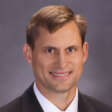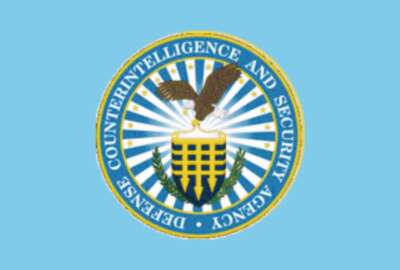Insight by Leidos
DoD Cloud Exchange 2023: Leidos’ Jason Rapalski on how multicloud adoption changes enterprise management
During the DoD Cloud Exchange, The Federal Drive’s Tom Temin talks with Leidos’ Jason Rapalski to learn what agencies need to think about and plan for to en...
Cloud computing discussions often focus on applications and data — and how to develop or optimize both for hosting in commercial clouds. But something less discussed is how the growth of cloud use has changed the way IT organizations must approach enterprise management.
“It changes in profound ways,” said Jason Rapalski, vice president and director for the digital modernization accelerator at Leidos, during Federal News Network’s DoD Cloud Exchange 2023.
Workloads and their associated security mechanisms have become increasingly portable, and agencies routinely move them from cloud to cloud, or from a data center to an edge computer.
“And when they move … this really changes a lot of things that you’ve got to think about,” Rapalski said.
He identified fives questions that IT teams must ask and answer:
- How is governance going to be set up?
- How is the agency going to manage its cloud environment?
- Who’s going to take care of those resources?
- How will configuration management across all these areas be handled?
- What necessary security changes need to occur?
“One of the things that becomes very important to think about — that’s different from an on-premise environment — is the cost of the dynamic nature of the cloud,” Rapalski said.
Rapid scaling up of an application can also scale up cost, so “you need to able to plan for how you’re going to manage that cost,” he added.
Factoring in cyber, data management demands of cloud use
Maintaining cybersecurity policies and specific safeguards becomes of paramount concern for enterprise management, Rapalski said.
All elements of what might be called distributed enterprise management entail data gathering and analysis to understand what is going on continuously, he said. For security purposes, for example, managers would want to know how their tools are performing in the various subenvironments of the enterprise.
Enterprise management in the cloud era also extends to data, Rapalski said.
“When you’re contained in your data centers, it’s very easy to know where things are,” he said. “As you expand to multiple clouds, now you’ve got data going in many different places.”
Given that bureaus and offices may have acquired their own cloud services, agencies might find “certain centers of gravity have been established with their data that they hadn’t planned for,” Rapalski said. “You have to start thinking about different ways to plan for this, realizing that the movement of data can actually be one of your big cost factors.”
Baking in your enterprise management requirements
IT organizations must plan ahead to ensure workloads and security controls operate properly regardless of where they’re hosted. They must also ensure other technical policies, such as those for backup and recovery, stay in place.
“Having design plans and concepts for how you set up your cloud environments really helps,” Rapalski said. “You create concepts of secure landing zones to be able to build those things out with those policies already in place.” When policies and security mechanisms are attached to the workloads, authorities to operate will move with them. And you’re able to move them smoothly back in-house should the need arise.
Cloud enterprise management must encompass the wide area network, which now extends to intercloud communications.
It all adds up to the need to render applications into containerized micro services, Rapalski advised. Today, that’s possible because most cloud services providers offer Kubernetes.
A containerized approach gives an organization more manageable portability, he said. “You know that those environments are going to be consistent when you’re moving workloads from one cloud to the next cloud.”
By the same token, he added, it’s wise to avoid reliance on cloud native services unique to one provider because that can prevent full interoperability.
Two other elements help with enterprise management in multicloud infrastructures, Rapalski said.
One is what he called an enterprise visibility component, a service that lets the IT staff monitor the enterprise from a single dashboard. It should include financial operations “to be able to understand your costs and understand where different aspects of your environment are impacting cost. You need to know the cost to know whether or not something’s happening efficiently.”
The second is a federated authentication component to let the organization monitor who is logged onto which components of the enterprise. “This becomes really key as folks are looking toward zero trust,” Rapalski said.
To read or watch other sessions on demand, go to our 2023 DoD Cloud Exchange event page.
Copyright © 2024 Federal News Network. All rights reserved. This website is not intended for users located within the European Economic Area.
Related Stories
Risk and Compliance Exchange 2024: DoD’ Stacy Bostjanick, DCMA’s Jennifer Henderson on finding ‘any means possible’ to help small biz with CMMC
Featured speakers
-

Jason Rapalski
Vice President and Director, Digital Modernization Accelerator, Leidos
-

Tom Temin
Host, The Federal Drive, Federal News Network
On DoD
Upcoming Events
Related Stories
Top Stories

Jason Rapalski
Vice President and Director, Digital Modernization Accelerator, Leidos
Jason Rapalski is the Vice President, Director of the Leidos Digital Modernization Accelerator. In this role he is responsible for overseeing the research, development, and incorporation of differentiated capabilities, managing upskilling efforts, and building external relations within Digital Modernization. He is also the Director of the Leidos Solution Architect Program where he guides the development of Leidos’ technical talent base and establishes a community of practice for sharing capabilities and best practices across the corporation.
Previously Rapalski served as Health Technical Capture Executive and the Operations Chief
Technology Officer for the Leidos Health Group’s Government Health and Safety Solutions line
of business developing technically differentiated solutions for civilian health agencies, setting
technical strategy, maintaining solid technical execution for our customers, and delivering new
capabilities.
Prior to joining Leidos, Rapalski held multiple positions within Lockheed Martin Information
Systems and Global Solutions to include Senior
Technical Manager for the Health and Life
Sciences business, Chief Engineer for an information technology services program within
the Civil group, and Product Development Team
Lead and Security Lead on a software development
program. Rapalski started in Lockheed Martin with the Space Systems Company holding various cybersecurity and system security engineering
leadership roles supporting development programs for both Department of
Defense and intelligence community customers.
Beginning his career as an officer in the United States Air Force, he provided operational cybersecurity for the United States Central Command and led multiple initiatives for the Air Force Communications Agency where he also served as a Command Briefer.
Rapalski earned a bachelor’s degree in Electrical Engineering with a minor in History from the University of Virginia and a master’s degree in business administration from the Tepper School
at Carnegie Mellon.

Tom Temin
Host, The Federal Drive, Federal News Network
Tom Temin has been the host of the Federal Drive since 2006 and has been reporting on technology markets for more than 30 years. Prior to joining Federal News Network, Tom was a long-serving editor-in-chief of Government Computer News and Washington Technology magazines. Tom also contributes a regular column on government information technology.







